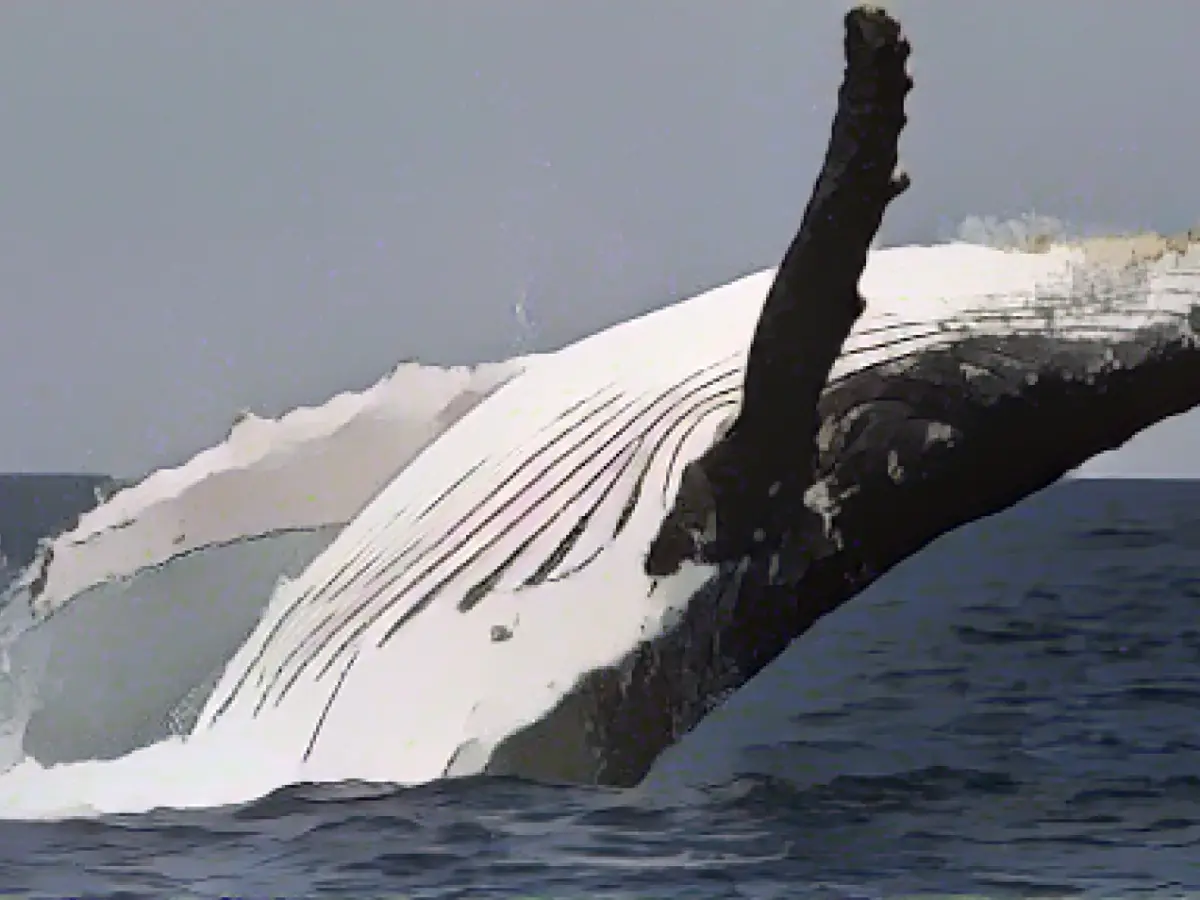The stark reality of climate change is taking a toll on whales and dolphins, as suggested by a report from Whale and Dolphin Conservation (WDC). The report, titled "Whales in Hot Water," released at the UN Climate Change Conference (COP28) in Dubai, points to the rapid alteration of marine habitats due to global warming, resulting in competition and even confrontations among species.
The oceans' warming trend precipitates an increase in algal blooms, releasing harmful toxins into the water. These toxins have been found in deceased whales and dolphins, potentially slowing their reaction times further endangering them in their interactions with ships.
Chile witnessed a significant tragedy in 2015, with at least 343 baleen whales dying due to an algal bloom, as excessive concentrations of paralyzing toxins were discovered in over two-thirds of the animals (69%). The WDC speculates that the catastrophic mortality event was likely a consequence of the algal bloom.
Marine mammals often have to navigate into highly trafficked waters as their habitats continue to change, heightening their vulnerability to collisions with ships. Moreover, these creatures may become more susceptible to diseases, as almost two-thirds of illness outbreaks in whales and dolphins have been recorded during periods of increased sea surface temperatures.
Sweltering heat magnets have incited conflicts between related species, such as bottlenose dolphins and Californian harbor porpoises. These dolphins have migrated to common bodied waters, where the former species attacks the latter with alarming frequency, often resulting in fatalities.
The dwindling krill population is another issue. Krill is one of the most crucial food sources for baleen whales. Industrial fishing and warmer sea temperatures are decimating krill populations, particularly in the Southern Ocean, where whales migrate during polar summers. Krill stocks have plummeted by 30% since the 1980s in this critical region, indicating a potential food shortage for whales.
The International Union for Conservation of Nature (IUCN) predicts a decline of 16-19% for krill populations in the Pacific and Atlantic by the end of the century. This scarcity highlights the importance of energy reserves present in marine mammals for migration, as it becomes increasingly challenging for them to cultivate adequate reserves. Worryingly, some species no longer migrate to warmer waters for mating, which may lead to lower reproduction rates.
The WDC advocates a mission to keep the global temperature rise below 1.5 degrees Celsius as per the Paris Agreement goals. Moreover, they suggest establishing protected areas, namely areas that satisfy the animals' nutritional, breeding, and migratory needs, to allow whales and dolphins to thrive without human intervention.
Curbing destructive fishing practices is of utmost importance as well, which can be achieved through governmental and industrial restrictions on fishing gear. By implementing alternative eco-friendly fishing methods, such as tethered gear and catch-and-release practices, we can significantly decrease the number of unwanted bycatch.
References:[1] [2] [3] [4] [5]





